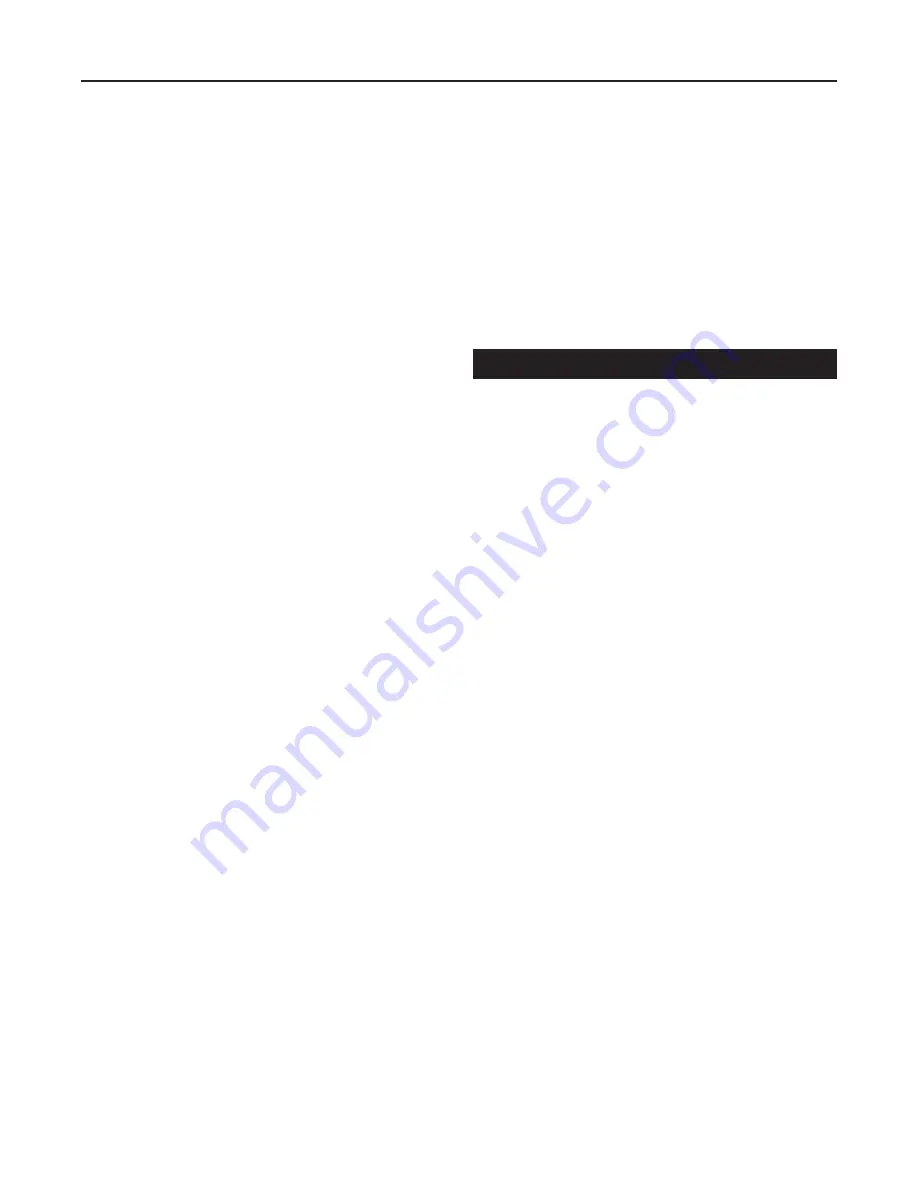
4
Pressure Regulators with Type SP/P Safety Pilot
Adjustment
Pilot Stem Adjustment
1. The length of pilot stem (key 24) is established
with seat ring (key 25) removed from body
(key 13).
2. Screw pusher plate (key 22) on stem (key 24) until
valve spring (key 23) is compressed to a length of
3/4 in. / 19.1 mm.
3. Prick punch thread to lock position. Grind off any
projection of stem (key 24) through upper end of
pusher plate (key 22).
4. Using Copaltite, Smooth-on No. 3 or equal,
plastic compound, screw the seat and disk
assembly into body (key 13). Bellows assembly
(key 10) if removed should be reassembled in the
same manner.
Pressure Stem Adjustment
1. Remove hood (key 16) and diaphragms (key 15).
2. Screw pressure plate (key 2) onto pressure stem
(key 7) until stem is flush with the face. Prick
punch thread to lock.
3. Turn down adjusting nut (key 8) until there is no
compression on adjusting spring (key 6). Loosen
lock set screw (key 21) in bonnet (key 11) and
barrel locknut (key 9). Turn up locknut (key 9) to
adjusting nut (key 8). Turn cowl assembly (key 20)
so that pressure plate (key 2) extends 1/64 in. /
0.40 mm above the diaphragm seating surface. Or
place gage #10082 across the diaphragm seating
surface and adjust cowl assembly (key 20) so that
pressure plate (key 2) is flush with gage.
4. Lock setting by turning barrel locknut (key 9) down
on bonnet (key 11). Tighten barrel lock set screw
(key 21).
Maintenance
▲
WARNING
To avoid personal injury, property
damage or equipment damage caused
by sudden release of pressure or
explosion of accumulated gas, do
not attempt any maintenance or
disassembly without first isolating the
regulator from system pressure and
relieving all internal pressure from
the pilot.
Regulators that have been disassembled
for repair must be tested for proper
operation before being returned to
service. Only parts manufactured by
Emerson should be used for repairing
this regulator.
Due to normal wear or damage that
may occur from external sources, this
regulator should be inspected and
maintained periodically. The frequency
of inspection and replacement of parts
depends upon the severity of service
conditions or the requirement of local,
state and federal rules and regulations.
Adjustment of Delivery Pressure
In the case of the Type ED, increasing the spring
compression of the pilot adjusting spring raises
the delivery pressure and decreasing the spring
compression lowers the delivery pressure.
In the case of the Type EW, moving the weight away
from the pilot increases the delivery pressure, and
moving the weight toward the pilot decreases the
delivery pressure.


























